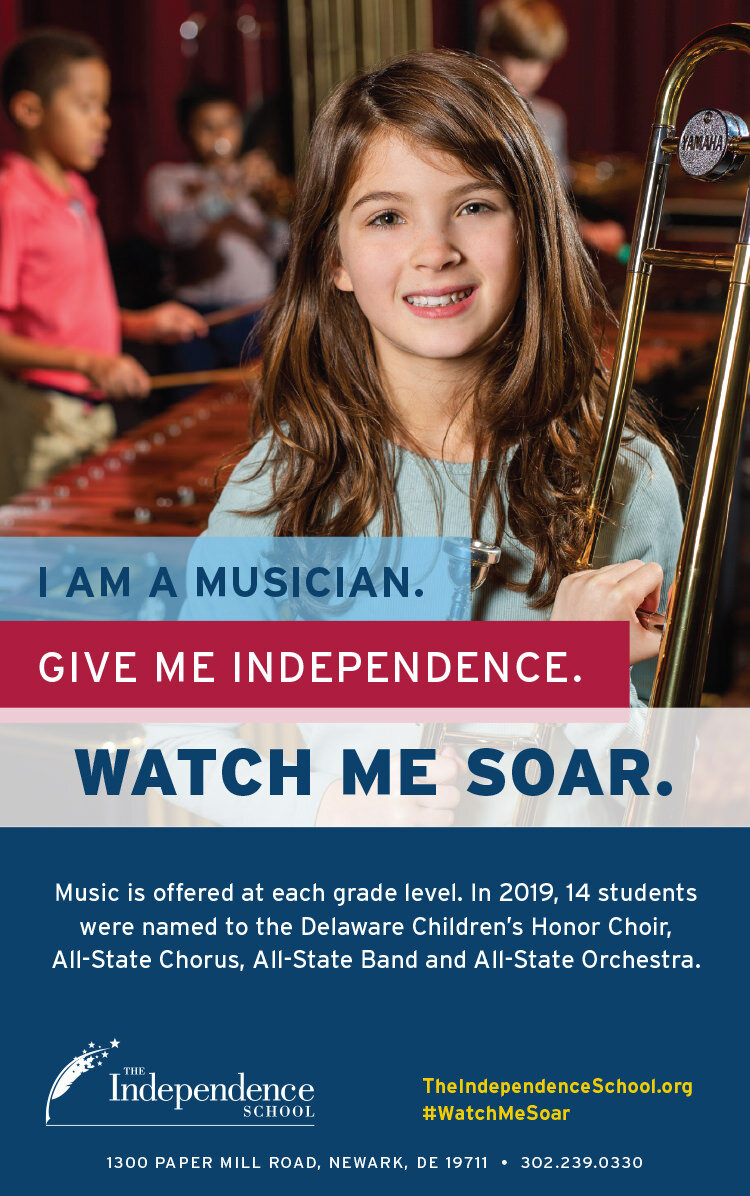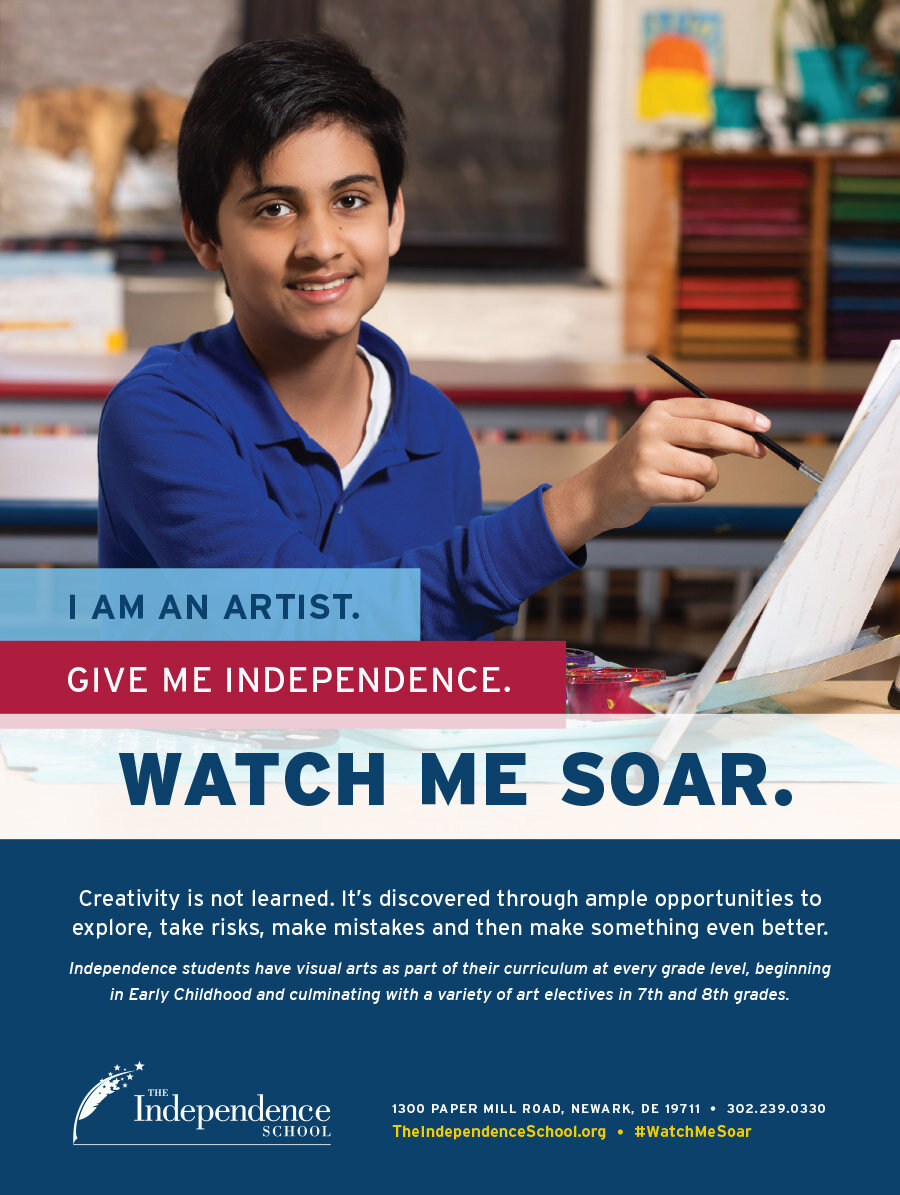School Ads Drive Enrollment
melinda wissmann
The Independence School, a long-time Kelsh Wilson client in Newark, Delaware, went public with a multichannel ad campaign that proved the power of creative awareness-building just when it was needed most.
Sometimes there’s just nothing like the power of an inspiring imperative—like the headlines in the highly successful ad campaign the Independence School has underway. One announces:
I am a writer. Give Me Independence. WATCH ME SOAR.
Another:
I am a scientist. Give Me Independence. WATCH ME SOAR.
Each message is paired with a portrait showing the confident and hopeful face of a different student at the school, and over the course of the campaign, the changing headline provides the chance to spotlight all the many roles in which they excel—as a leader, a musician, an athlete, and more.
Developed with a combination of in-house inspiration, creative execution from Kelsh Wilson, and beautiful student portraits by a talented Independence parent, the messages have reached the world through a full range of media channels: through digital and print ad buys, as weekly social media messages, as rotating banners across the homepage of the school website linking to themed content below, and reproduced as posters for the walls outside the school’s admissions office.
And, they’ve been a hit, attracting more 3,000 unique pageviews to date, just on the school website.
“The ads are simple and bold,” explains Claire Brechter, director of marketing and communications at Independence. “And they say something that’s both true and special about the school.” She says the original intent in planning the campaign was to focus on outcomes, that is, not just what’s great about the school, but the great things it helps its students achieve and become.
The campaign was just recognized with a Bronze award in the InspireEd’s Brilliance Awards—a notable achievement given that the competition is global and Independence was the only U.S. school to place. Judges praised Independence for a “well-rounded, all-encompassing campaign!”
Even more importantly, the ads shifted the needle on public awareness, getting the Independence name in from of families just as the disruption of COVID was motivating many to go school shopping.
“We had a very good story to tell about our success in distance learning,” says Brechter, “but we wouldn’t have had such a large audience ready to hear it if it weren’t for the fortunate timing of Watch Me Soar.”
It goes to show the eternal impact of a strong headline, paired with a great photo and a few carefully chosen proof points—a classic ad executed for the digital age.































































